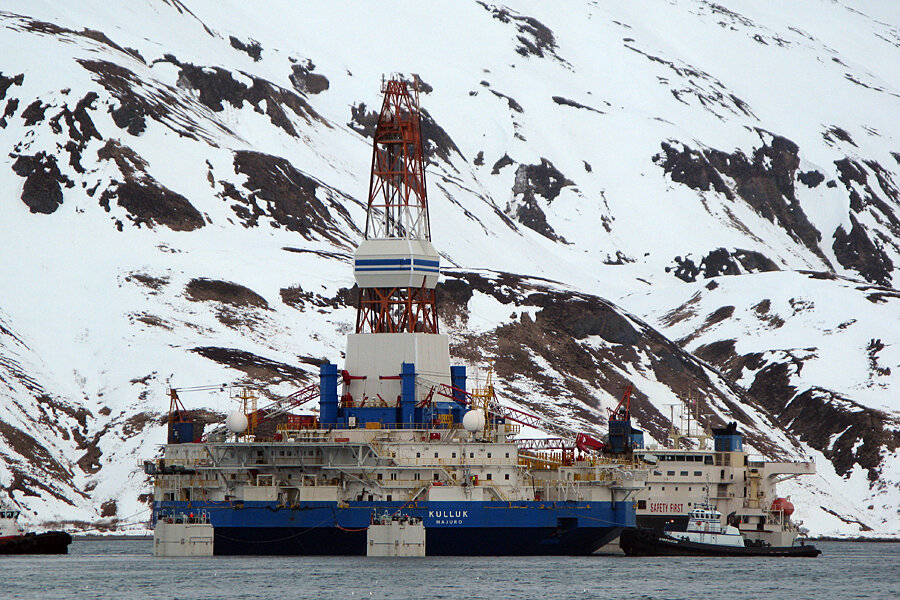Arctic drilling: Will oil lure Shell back to icy waters?
Loading...
Shell could be returning to the Arctic after a two-year hiatus.
The company submitted a drilling plan to the U.S. Department of Interior on Aug. 28, which suggests it is considering returning to the icy waters in the far north to look for oil. While no final decision has been made, Shell’s submission puts the company on track to drill in the summer of 2015.
Shell has spent several years and nearly $6 billion on its Arctic campaign thus far. Harsh conditions, poor infrastructure, and a short drilling season hindered its progress, but it was the company’s bungled 2012 operations – a rig ran aground and its oil spill response ship failed inspection -- that nearly ended its plans in the Arctic for good.
Hoping to put those troubles behind it, Shell has now submitted a pared-down drilling blueprint that eliminates exploration in the Beaufort Sea.
But before Shell can move its rigs into the Chukchi Sea, several obstacles remain. Perhaps the most important is a revised Environmental Impact Statement (EIS) currently under review by the U.S. Bureau of Ocean Energy Management. The bureau is redoing its analysis after a court earlier this year invalidated parts of a 2008 environmental assessment.
The problem was that in its evaluation of the environmental impact of drilling, the government only assumed 1 billion barrels of oil would be discovered. Environmental groups successfully sued, arguing that regulators did not consider the possibility that more resources would be discovered, or the possibility that multiple wells would be developed, leading to potentially more environmental damage than the government estimated.
Shell will need to receive the revised environmental assessment before it can begin drilling. The review is expected to be finished in the spring of 2015, just before drilling season.
Shell has also been working to resolve other problems that plagued its 2012 campaign. It has signed deals with native tribes in Alaska that will give Alaskan communities more royalty payments and other financial incentives if oil is developed. This could quell local opposition.
Shell has also lined up new equipment and ships to deal with sea ice, and overhauled its management structure to assuage government regulators. The changes would likely be enough to meet the minimum standards that the Obama administration is looking to codify for Arctic-specific drilling.
Nevertheless, a return to the Arctic could be a risky move for the Anglo-Dutch company. Shell will likely be much better prepared to drill in icy waters in 2015 than it was in 2012, but the extreme conditions still present formidable complications that challenge even the most rigorous preparation.
Another interesting thing to watch is whether or not the Arctic campaign makes sense financially. Shell CEO Ben van Beurden pledged to chart a new course for the oil major when he took over the helm in January 2014, which included paring back spending on “elephant” projects.” He wants to trim down the company and reallocate resources towards stable and more cost-effective projects, and plans to sell off $15 billion worth of assets by the end of next year.
It is hard to see how the Arctic fits into this vision. The campaign has already cost $6 billion and there hasn’t been any significant drilling to date. Even if drilling operations proceed relatively smoothly, the project will be highly expensive with an uncertain payback. And the possibility of a serious oil spill would be potentially catastrophic, not just for the environment, but also for the company’s bottom line. Other companies are letting their Arctic leases expire after weighing the risks versus rewards and concluding that operating in the punishing environment is not worth the trouble.
The Alaskan government recently slashed taxes on oil companies operating in the state and defeated a voter initiative to reverse the new policy, which may have improved the economics of drilling in the Arctic and played a role in Shell’s decision to return.
To be clear, Shell has not made any decision on 2015. But considering the fact that it is amassing equipment, signing deals with local tribes, refurbishing its drilling rigs, and submitting the requisite paperwork to regulators, it is safe to assume that Shell is gearing up to once again to put it on the line for Arctic oil.
Source: http://oilprice.com/Energy/Crude-Oil/Return-to-the-Arctic-Shell-Looks-Set-To-Take-Another-Run.html







